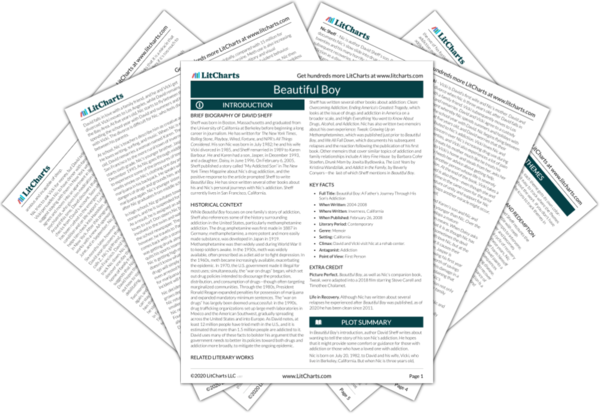Here, David emphasizes that while addiction may affect a wide variety of individuals, treatment is more accessible for some than others. Nic is fortunate to come from a privileged background that allows him to get treatment, rather than having no support and winding up in jail. This is another implicit call for a reform of how the government treats drug addicts; David argues toward the end of the book that all addicts should be able to receive treatment, regardless of their ability to pay.


